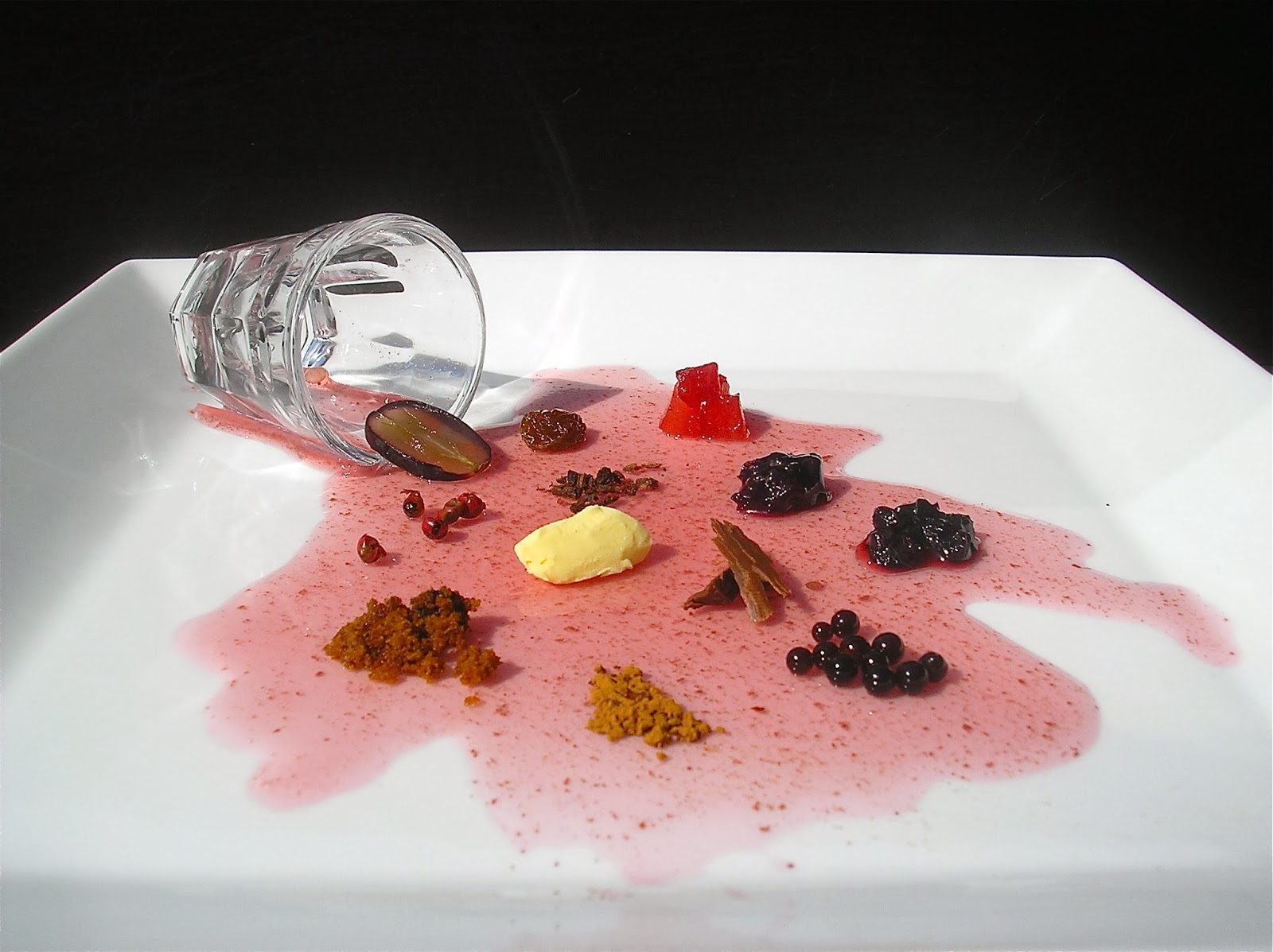Tannin has a bitter taste and a dry, puckering mouth feel ( think cold strongly brewed tea ) and as wine ages this mellows to balance out with the fruitier tastes of a red wine. As with the white wine deconstruction I've also accompanied the grape juice gelee with ingredients that associate to the taste but also this time tried to replicate some of the mouth feels experienced with a good red wine.
To make the gelee I've used the same techniques as with the white wine post except for the addition of stems to the juice and after the juice was strained I did a second press of just the pulp and skin to try and excrete some of those tannins. This was achieved by pressing the cheese cloth wrapped skins under weight for a couple hours and collected the juices that ran from this press and added them to the first press.
As with the whites there are countless influences on the overall taste of a red wine and this may include the techniques employed in making the wine for instance the conversion of malic acid to lactic acid during malolactic fermentation determines the mouth feel from acidic 'balsamic vinegar' to a more creamier mouth feel of say 'butter' or even in some cases of reds 'chocolatey' . The variety of a grape lends individual flavour characteristics as well, for example a good pinot noir has a strong flavour of 'cherries', as a Bordeaux is likened to 'plum' and a Shiraz is more like 'blackberry' and has strong 'peppery' notes. When a wine is blended such as a merlot, the wine can lend features from both varieties and may have spicy back notes such as 'cinnamon' or 'cloves' and is said to sometimes have a hint of 'fruitcake' in its taste. Climate also plays a big factor in the boldness of the taste of fruit in the berries grown, in more temperate regions wine lends a tendency to have a light, crisper fruit taste more closer to the strawberries, cherries or the 'black grape' itself but in hotter climates the fruit tends to ripen better and will give more bolder fruit flavours of blackberry, blackcurrant or even 'raisins'.
This plate gives the diner a great selection of ingredients to ultimately use as 'food play'. Experimenting with combinations of flavours and mouth feels to recreate their favourite wine on a spoon or simply create their own blends to enjoy.






No comments:
Post a Comment